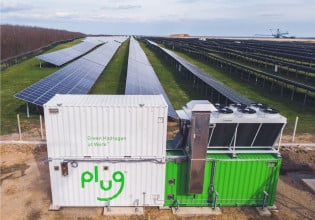Carbon Capture: Decarbonization Maturation
Carbon capture and creative waste management could be keys to putting less carbon into the atmosphere.
I became passionate about climate change 15 years ago, and believe decarbonization is one of the critical paths we must follow to address the negative impacts–ranging from extreme weather to ocean acidification and coral reef decimation to sea level rise–of too much carbon in the atmosphere.

Atmospheric carbon. Image used courtesy of Pixabay
The writing is on the wall for extracting value from mining and burning fossil fuels (coal, oil, natural gas) because the unavoidable byproduct of such combustion is atmospheric carbon pollution. The heat-trapping effluents that go into the atmosphere remain there for years and years. So, the logic goes, the first thing we should do is stop putting more carbon into the atmosphere.
Decarbonization and the Energy Transition
My focus on decarbonization over the years developed around the idea that there are at least two central tenets of the energy transition. First, reimagining how electricity is made: replacing fossil fuel combustion with clean technologies to make zero-carbon electricity–goodbye to coal and natural gas power plants and hello to solar and wind in ever larger amounts.
Second, electrify everything to avoid fossil fuels. That aspect of decarbonization points to the rapid replacement of internal combustion engines with electric vehicles.

Image used courtesy of Adobe Stock
I spent a lot of my recent career on these two concepts, for example, working on and writing about the smart grid, working with a DC fast charging manufacturer, and experimenting with new concepts like energy internet of things and business models associated with microgrids and resilience. This technology-driven aspect of decarbonization is of keen interest EE Power readers, but there’s more to decarbonization than meets the eye.
Carbon Capture
And then, a couple of months ago, in late January 2023, along came an announcement from the DOE’s Pacific Northwest National Laboratory (PNNL). PNNL scientists have focused on solvent technology, applying their findings to capturing airborne CO2 and using it as a substitute feedstock to produce methanol, a widely used chemical in a variety of supply chains around the world (CO2 => CH3OH).
This process makes more sense to me than simply sequestering waste CO2 in caverns or injecting it into the ground. A critical aspect of this solution is to shift the thinking away from managing a waste product that adds costs to creating economic models that create new value. With this new technology, a lower-cost supply chain component could be created to stimulate greater profitability. Turning waste from a liability into an asset, a new economic value, is a game-changing shift in perspective.
PNNL’s expertise in modeling, designing, building, and testing carbon capture solvents has resulted in:
- 15% reduction in capture costs relative to commercial second-generation technologies
- 26% increase in capture efficiency over the current baseline
- Very low-viscosity solvents that require less energy for pumping
- Drop-in alternatives for existing systems
- Accelerated commercialization potential via reuse of existing infrastructure
Aqueous capture solvents exist commercially but still have a high energy cost. PNNL has developed a new class of chemistry and transformational technology within ten years, a process that normally takes 30 years to develop.
One of the best aspects of this solution is the use of another waste product, discarded shrimp husks, in their innovative process. This type of approach is the same employed in the field of waste to energy, most typically in mining waste methane produced underground beneath landfills, for powering onsite generators to make (relatively) clean electricity.
This type of creative waste management has long been practiced historically in Texas, where ranch workers would remove invasive cedar (Ash Juniper) and craft fence posts and cedar planks for lining closets or transform invasive mesquite trees they remove into chips used by barbecue joints that prize the smoky flavor of mesquite. The list goes on.
These recent revelations have led me to reconsider my long-held opinions on carbon capture and sequestration/storage, shining a new light on solving the riddle of decarbonization. With innovation and engineering like this, I’m convinced that we’ll ultimately find new ways through this maze.






